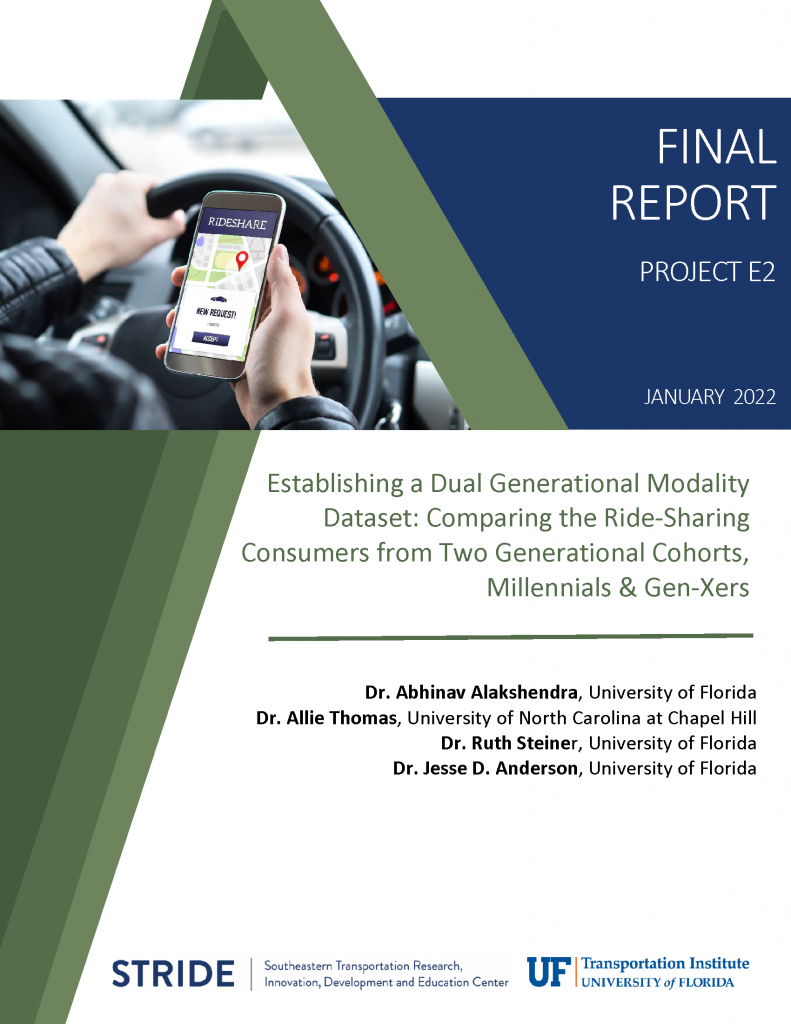Establishing A Dual Generational Modality Dataset: Comparing the ride-sharing adoption trends and perspectives of consumers from two generational cohorts, Millennials and Gen X’ers
Research Team
Dr. Abhinav Alakshendra, University of Florida
Dr. Ruth Steiner, University of Florida
Dr. Allie Thomas, University of North Carolina at Chapel Hill
Background: Ride-hailing services such as Uber or Lyft are the latest tool in sustainable transportation strategies to come under scrutiny. Originally thought to be a way to reduce congestion, these services have actually been shown to increase it in some cases. Although the number of individuals driving around urban centers to find parking appears to decrease with the adoption of ride-hailing, Uber or Lyft drivers are instead circling around waiting for riders. Additionally, ride-hailing services have not led to the abandonment of personal vehicles, but rather to the abandonment of public transit in some cases.
Goal: The purpose of this study is to evaluate the use of ride-hailing services in the two largest age cohorts in the United States: Millennials and Generation X-ers, focusing on the Southeast. This study seeks to determine how each generation has adopted these methods to help planners learn how to incorporate these strategies in transportation planning.
Results: The results of this study illustrate that both generations use ride-hailing services, but as seen in previous studies, millennials are more inclined to use them. Ride-hailing also serves as an important commute mode, particularly for millennials. In addition, and of importance to planners, the market has diversified, and more users are coming from the suburbs. Overall usage of ridesharing services will likely continue to increase over time and planning strategies should attempt to predict this change rather than respond to it.
